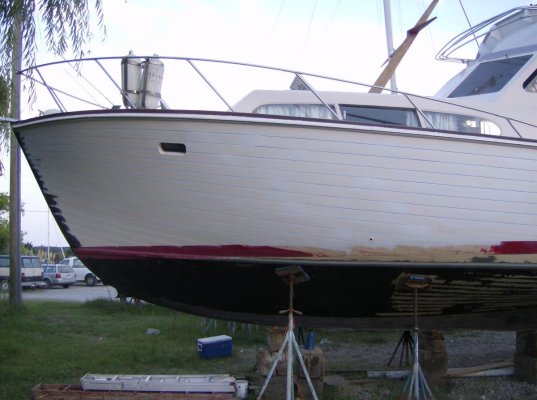I have been using the Loctite Black PL roof and flashing underwater for several years on the hull and it has stayed on fine so far.
Some I mixed with 1/32 milled fibers at 30 to 40%, I coated from the bow going back 10 feet underwater. At stern, I used it straight. Adding the glass microfibers really makes the rubber tough. my idea was if I hit something in the water, this would give it more durability at the bow area..
The black PL is simply to seal the hull from leaks and wood eating critters, not worried about super strength. Why I think it stays on, it is stretchy stuff like neoprene rubber. Easy to use, easy to get, did work fine for me. My first test I started about 6 years ago underwater and when hauled in 2014, was good. So now with more extensive usage from 2014 to 2016 has also been fine.
My method was use a 6 inch wide putty knife blade and smooth it onto the surface.
This allows easy control of application.
Black PL after 2 or 3 days can be sanded smooth with 120 grit random orbit sander.
It has also been great for sealing out water above the waterline. It absolutely prevents water movement unlike paints which crack and also let water pass through themselves. I have been using it for sealing in glass and lexan windows too.
here is a 2014 picture. I also rescrewed and sealed the bow. In 2006, I totally rebuilt the underwater hull even repairing many frames. Used about 4000 new bronze screws.


